Soil pollution is a direct result of societal, industrial, and agricultural growth. A number of the common pollutants can be discovered with EPR, resulting in measures to control their distribution and help with clean-up plans.
- Common soil pollutants are a result of industrial waste: radioactive materials, cytotoxic chemicals, poisonous gases, cancer-causing agents.
- Industrial heavy metal by-products: chromium, cadmium, mercury, lead
- Agricultural burdens: pesticides, herbicides, fertilizers, insecticides
Each of these pollutants is toxic in their own right and frequently engages in processes resulting in the formation of surface-stabilized environmentally persistent free radicals (EPFRs). EPFRs play a part in the further production of toxic compounds and also play a part in radical processes which influence the formation of humic substances, and carbon sequestration. It has also been discovered that EPFR-containing particles can produce ROS that induce oxidative stress.
The only method for the direct and non-invasive detection of transition metals and free radicals is Electron Paramagnetic Resonance (EPR) spectroscopy. One can identify, quantify and monitor paramagnetic heavy metals, long-lived ERFRs in soil organic matter, and short-lived ROS’s analyzing an EPR signal.
Challenge
To understand the impact of pollution from agricultural and industrial sources on the soil environment, in depth research is needed. Understanding the roles and mechanisms and of the inorganic, biological, and organic components of soil result in effective strategies to neutralize toxic compounds.
Solution
The Bruker EMXnano benchtop EPR spectrometer package
- Establishes with high precision, the g-factor using the integrated internal marker to identify the radical species
- Evaluates the health and environmental ramifications of EPFRs in soils and sediments
- Detects, identifies, and quantifies EPFRs, ROS, and transition metals in contaminated soil systems
- Monitors radical reactions for better understanding of the oxidation mechanisms and to establish the effect on human health
EMXnano Key Features
- Accurate results
- Ease of use
- No prior EPR experience needed
- Low cost of ownership
- Full workflow for measuring, analyzing and quantifying free radicals and transition metals
- Video how-to-guide and startup kit
- Superior sensitivity
- Compact footprint
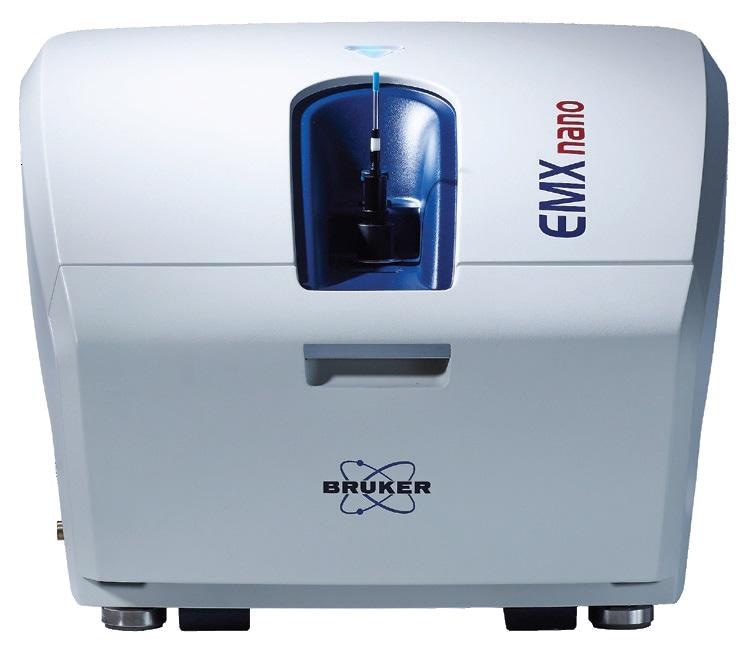
EPR Study on Soil from Superfund Sites in the US
- Red shows the sites which are on the National Priority List currently, yellow is a proposed clean-up site, and green is typically a cleaned site
- Superfund sites are polluted locations which need long-term response to clean up hazardous material contaminations
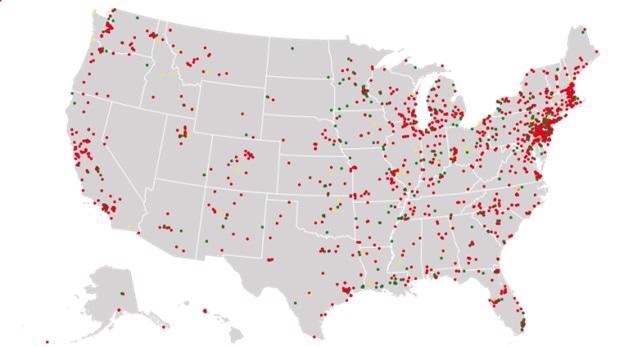
By skew-t (Own work) CC BY-SA 3.0, via Wikimedia Commons
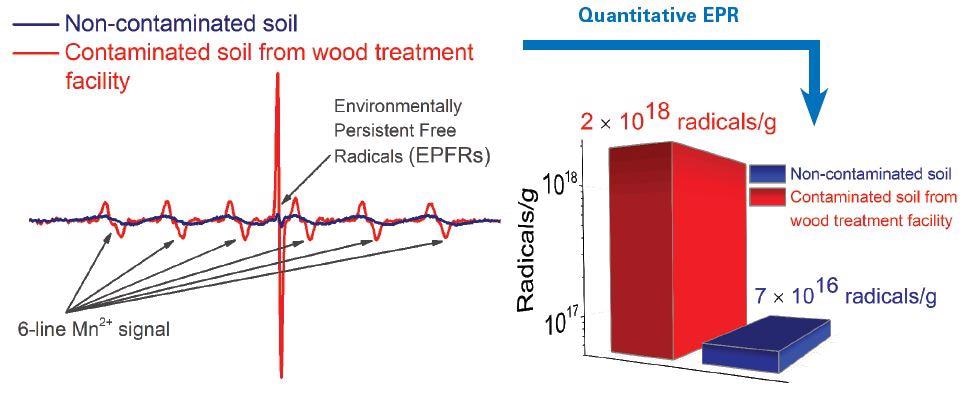
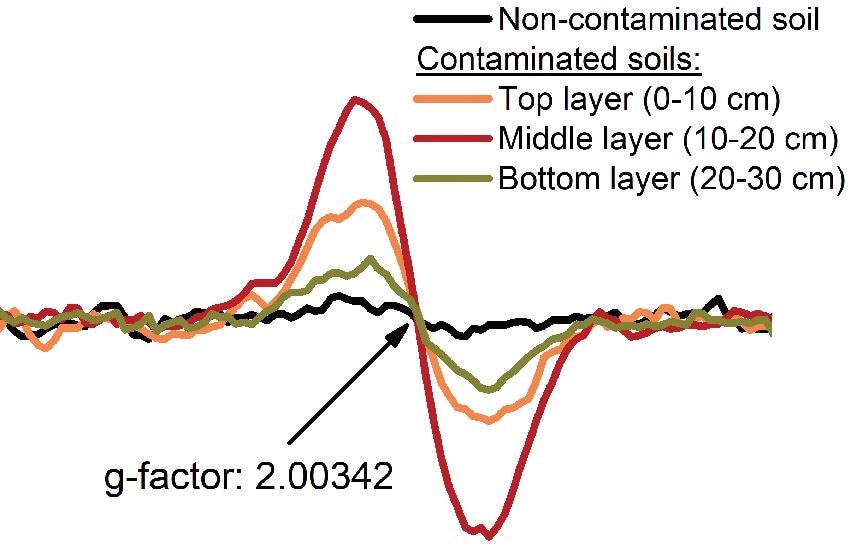
- EPR identifies and calculates the formation of environmentally persistent free radicals (EPFRs) in contaminated soils from Superfund sites.
- The g-factor of the radical signal was utilized to identify this EFPR as the phenoxyl radical.
- The highest radical concentration is located in the middle depth soil layer (10-20 cm) at one of the sites which correspond with the contaminant concentration. EPR monitors the radical concentration as a function of soil depth.
- The radical yield established by quantitative EPR analysis here contaminated over a decade ago, which could suggest a mechanism where the contaminant is continually generating EPFRs.
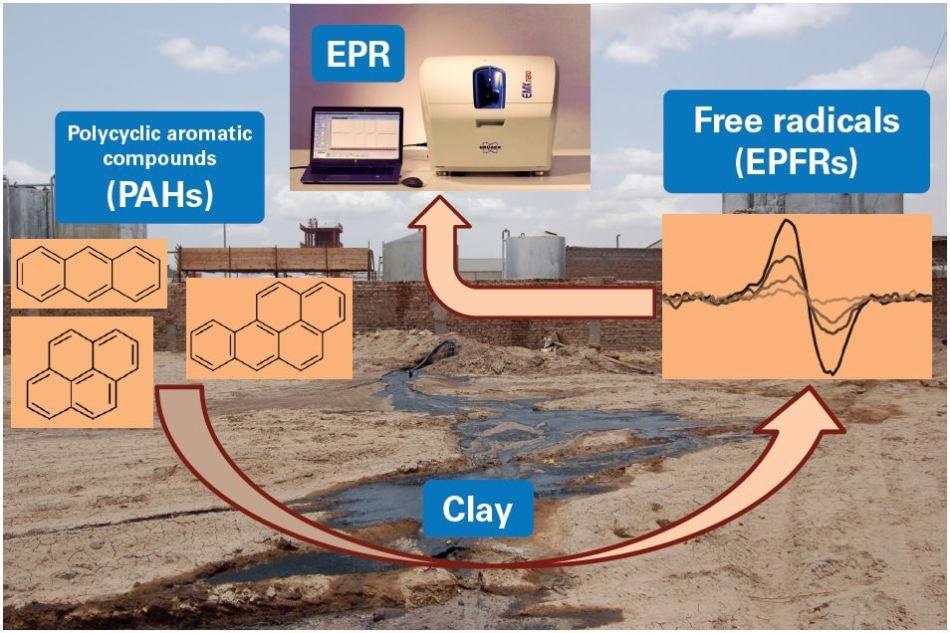
Free radicals in Fe(III)-enriched clay
- EPR shows the catalytic role of transition metal centers (Fe3+) in phenol contaminated clay minerals in the formation of EPFRs.
- Clay minerals act as a potential reservoir of toxic organic pollutants and transition metals.
- EPR monitors and quantifies the generation of EPFRs using oxidation-reduction mechanism:
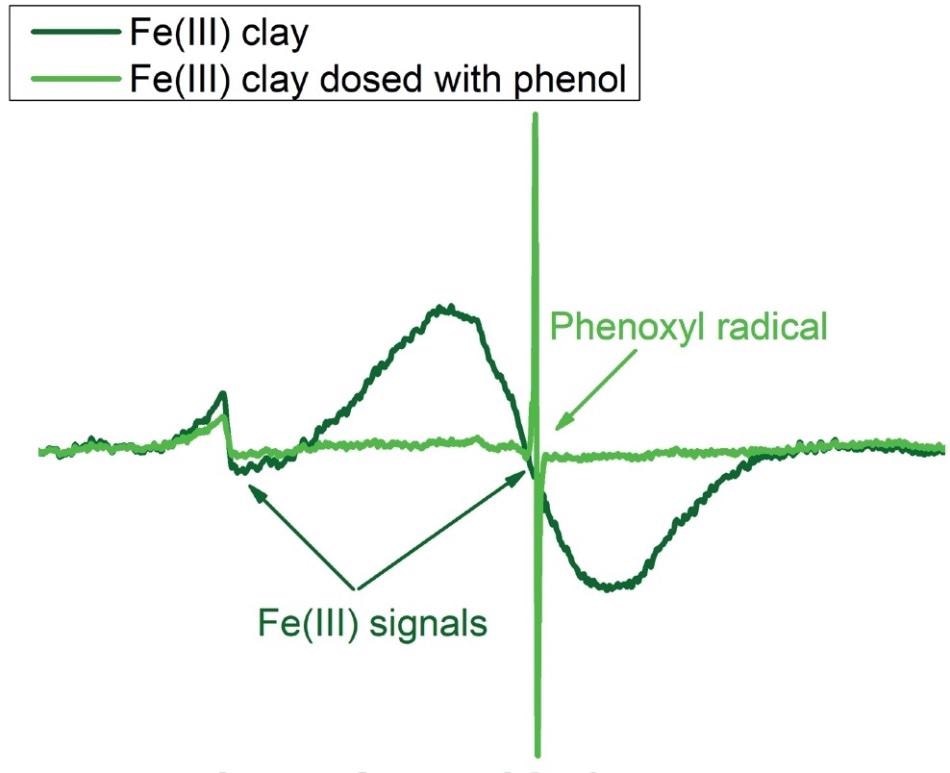

ROS in biochars (supplements which are added to soil to improve fertility)
- During production (charring), stable C- and O-centered organic radicals are induced in biochars and identified by EPR.
- During charring, quantitative EPR displays an increase in the biochar induced radical concentration
- Harmful hydroxyl radicals (•OH) are formed which are identified by EPR
- The stimulation of hydroxyl radical production up to 1000 minutes is shown on the time course of the ROS formation.
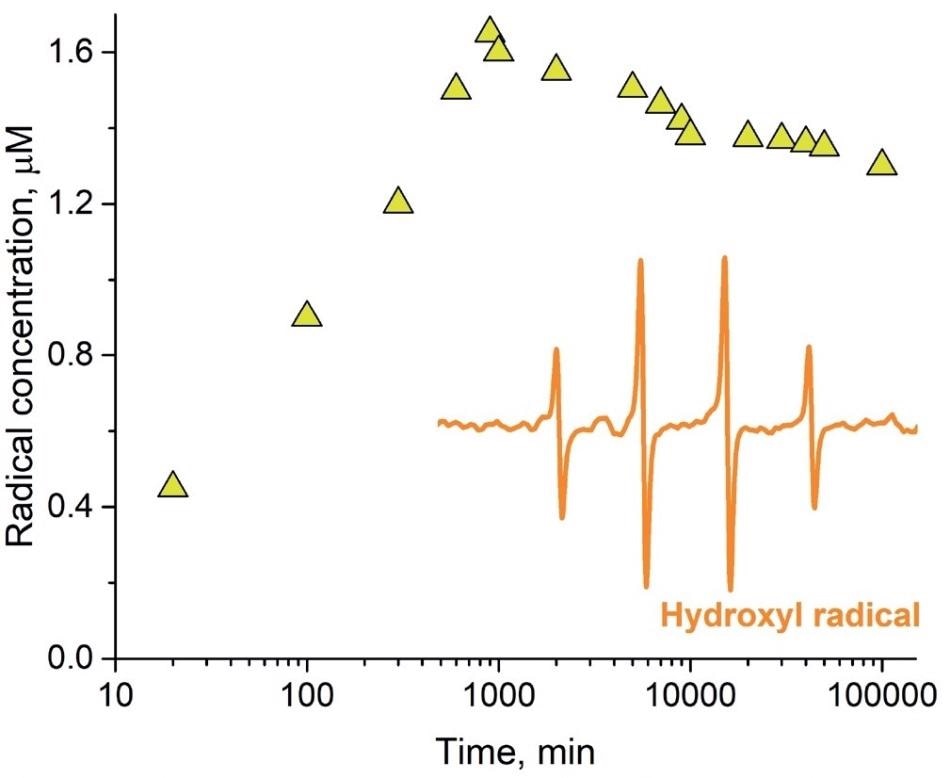
Summary
The potentially toxic EPFRs existence questions the belief that sorption of an organic pollutant into a soil matrix is a technique of mitigating its environmental impact. So, understanding how EPFRs form in contaminated sediments and soils is crucial. Furthermore, transition metals can behave as catalysts for EPFR generation and often, are toxic themselves.
The EMXnano is the answer to investigate and examine this important radical chemistry and the identification of transition metals. One gets insights into the mechanisms involving production of large amounts of EPFRs in soils which has significant impact on human health with EPR.
Further Reading
- dela Cruz A. et al., Detection of environmentally persistent free radicals at a superfund wood treating site, Env. Sci. Technol. (2011) 45 6356
- Liao S. et al., Detecting free radicals in biochars and determining their ability to inhibit the germination and growth of corn, wheat and rice seedlings, Env. Sci. Technol. (2014) 48 8581
- dela Cruz A. et al., Assessment of environmentally persistent free radicals in soils and sediments from three superfund sites, Environ. Sci. Process Impacts (2014) 16 44
- Nwosu U. et al., Formation of environmentally persistent free radical (EPFR) in iron(III) cation-excganged smectite clay, Environ. Sci. Process Impacts (2016) 18 42
- Jia H. et al., Formation and stabilization of environmentally persistent free radicals induced by the interaction of anthracene with Fe(III)-modified clays, Env. Sci. Technol. (2016) 50 6310

This information has been sourced, reviewed and adapted from materials provided by Bruker BioSpin - NMR, EPR and Imaging.
For more information on this source, please visit Bruker BioSpin - NMR, EPR and Imaging.